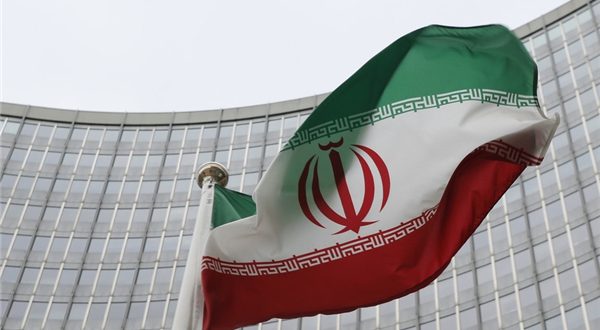In 1961 John F. Kennedy established a science cooperation agreement with Japan. following appeals to repair the broken dialogue between the two countries’ intellectual communities after World War II. That agreement helped round out a tenuous relationship at the time. rooted only in security concerns. In the 1970s. US diplomats took several science initiatives during their talks with China. and when official diplomatic ties were established in 1979. science played a big role in the shaping of renewed efforts. Anti War said in an article.
At the height of the Cold War. the United States and the Soviet Union had a number of programs facilitating collaboration and exchange between the two countries’ scientific and technical communities. The science diplomacy again gained popularity during the administration of Barack Obama. In 2009. President Obama called for partnership during his A New Beginning speech in Cairo. Egypt. These partnerships would include a greater focus on engagement of the Muslim world through science. technology. and innovation building and connecting scientists from the US to scientists in Muslim-majority countries.
US-Iranian Scientific Cooperation
Iran. the country whose scientific output is reported to be the fastest in the world over the last four decades. is no exception to aforementioned form of collaboration and globalization of science. Iranians welcome scientists from all over the world to Iran for a visit and participation in seminars. scientific associations. or collaborations. Many Nobel laureates and influential scientists such as Bruce Alberts. F. Sherwood Rowland. Kurt Wüthrich. Stephen Hawking. and Pierre-Gilles de Gennes visited Iran before and after the Iranian revolution. Some universities also hosted American and European scientists as guest lecturers.
Although sanctions have caused a shift in Iran’s trading partners from West to East. scientific collaboration has remained largely oriented towards the West. Over the last two decades. Iran’s top partners for scientific collaboration were the United States. Canada. the United Kingdom and Germany. in that order. Iranian and American scientists coauthored thousands of articles in scientific publications.
This collaboration has been fostered through a number of mechanisms. in the United States. the American Association for the Advancement of Science (AAAS). the National Academy of Sciences (NAS). and the National Institutes of Health (NIH) have advanced these efforts. These organizations have fostered formal and informal exchange of scientists. clinicians. bioethicists. and others. resulting in collaborative research that has contributed to important gains in knowledge of a range of medical and health conditions and concerns.
The NAS prioritized foodborne illness. with particular attention to disease surveillance and approaches to addressing food contamination. The activities comprised workshops. joint planning meetings. individual exchanges. and a three-year pilot project related to food-borne disease surveillance carried out in Iran. More than 500 scientists representing 80 institutions in the United States and Iran were involved during the first decade of the initiative. The NAS also reports that hundreds of additional scientists in the two countries met with their scientific peers during the visits and that thousands of others were present. in person or virtually. at scientific lectures.
Another important area of cooperation is on researching stem cells. The relevant announcement was made in 2002 by Ali Khamenei. who praised research on surplus embryos created as part of fertility experiments as a lofty mission that could help Iran and the Islamic world reclaim its position as a globally important player. The result has been that scientists have had freedom to conduct experiments that are rather envied by many in the United States. for example. where comparable research has been precluded by the interventions of conservative and influential religious figures.
Iranian scientists thus enjoy a level of freedom in their scientific endeavors not typically seen even in the programs of larger Western countries. due to the regulatory practices of those countries and questions surrounding the ethical viability of using embryonic stem cells for research purposes. The American-like debates surrounding the relationship between conception and life are not found in the Iranian stem cell community.
According to the data released by Iran’s Vice-Presidency for Science and Technology. by the end of 2016. Iran ranked 20th in the world with a total number of 6.360 scientific papers in the field of stem cell sciences and regenerative medicine including cell therapy. gene therapy. hematopoietic stem cell transplantation. tissue engineering. and biomaterials. In terms of published papers in the field of stem cell sciences and regenerative medicine. Iran is ranked first in the Middle East and Islamic world.
It’s remarkable that they were able to do what they’ve done. Konrad Hochedlinger of the Harvard Stem Cell Institute and Massachusetts General Hospital said in 2009. Even with their limited infrastructure. Iranian scientists have managed to isolate six human and eight mouse embryonic stem cell (ESC) lines over the past decade. and then successfully turn these cells into functional pancreatic. heart. splenic. and liver cells.
Iran was the 10th country in the world to successfully isolate human ESCs in 2003. and the fifth country to reprogram human skin cells to an embryonic-like state to create so-called induced pluripotent stem cells in 2008. Other landmark achievements include the application of stem cell therapy for treating the spinal cord injury. coaxing human ESCs to become mature. insulin-producing cells in 2004. cloning the country’s first sheep at the Royan Institute in 2006. conducting the world’s first human ESC proteomics study in 2006. the use of bone marrow cells to repair the cornea. and a new method to speed up tissue recovery in cornea transplant operations. More interestingly. under Iran’s highest political and religious authority Barkat Pharmaceutical Group. a substituent of Headquarters for Executing the Order of Imam Khomeini (EIKO) or Setad. in cooperation with Royan Institute in 2014 established CellTech Pharmed to meet the ongoing demands for stem cell therapy in Iran. It is a recognized leader in manufacturing and distribution of cell-based therapies that is developing a therapeutic stem cell platform technology using discoveries made at the Royan Institute and Barakat Pharmaceutical Group.
Lured and Detained: The Case of Masoud Soleimani
Top Iranian stem cell scientist Dr. Masoud Soleimani. a professor and biomedical researcher at the Tarbiat Modares University (TMU) in Tehran. was one of numerous Iranian scientists who freely cooperated with their US counterparts. In mid-2018. Soleimani had been invited by the Mayo Clinic in Minnesota to conduct a research program and to undertake a six-month study there. so he left for the US on 22 October 2018.
However. upon arriving at the Chicago airport. the horror has begun. He was immediately arrested by the Federal Bureau of Investigation (FBI). his visa was canceled and he was transferred to Dayton prison in Atlanta. Georgia for unspecified reasons. According to Leonard Franco. his Atlanta attorney. Soleimani has since been held behind bars without bond. Neither the FBI nor the US prosecutors have so far officially commented on his detention. During Soleimani’s sole court appearance on 14 May. he was told he was charged with trying to transfer some ‘growth hormone vials’ via two students to Iran.
Soleimani’s attorney also revealed that Byung Jin Pak. the US attorney in Atlanta. secured Soleimani’s indictment on 12 June 2018. just a month after President Donald Trump withdrew the US from the Iran nuclear deal. and Soleimani had been fully unaware of such an indictment when he flew to the US. Franco said that Soleimani’s treatment by federal authorities. the revocation of his visa and the decision to detain him without bond doesn’t square with Soleimani’s international reputation as a scholar. professor. and doctor widely known in the field of stem cell research and regenerative medicine. Soleimani has no criminal history anywhere in the world.
Franco and Page Pate. another Atlanta lawyer. said that they had been puzzled by the federal government’s decision to prosecute Soleimani and two of his former students. Mahboobe Ghaedi and Maryam Jazayeri. for purported trade sanction violations over eight vials of human growth hormone. The hormone. which is a form of synthetic protein. was seized from Jazayeri in 2016 by customs authorities in Atlanta when she was heading to Iran to give it to Soleimani for research purposes. Jazayeri had received the hormone from Ghaedi.
The seizure occurred at a time when Washington was still a signatory to the 2015 nuclear deal (JCPOA) and anti-Iran sanctions had not been reimposed yet. The growth hormone is not banned in the US or Iran and was being used exclusively for medical research. which is still considered largely exempt from US sanctions. Franco said. However. Ghaedi and Jazayeri faced similar federal charges for attempting to supply Soleimani with the growth hormone. Ghaedi is a permanent American resident and an assistant professor at Yale University’s School of Medicine. and Jazayeri is a naturalized US citizen and Kentucky resident and has conducted medical research at the University of Louisville. Both are currently free on $250.000 and $200.000 bond. respectively. Pate. who represents Jazayeri. said his client was completely confused by all this.
Franco also stated that he truly don’t understand the government’s decision to prosecute. adding that it appeared to be some type of policy argument. Motions to dismiss the charges are pending in federal court in Atlanta in front of US District Judge Eleanor Ross. However. Federal prosecutors in Atlanta have not yet responded to the motions. According to TMU authorities. hearing this case has been adjourned for at least three times since October and the TMU and Soleimani’ family have so far paid $70.000 to his lawyers to prove his innocence. but all to no avail.
For months. we weren’t given any clear answers until we managed to find out where he was by hiring a lawyer and following up. Soleimani’s brother Rasoul said. The vials were not subject to sanctions and have a purely medical use… the Americans’ absurd claims have baffled everyone inside and outside the country. he added. Rasoul also revealed that the professor had been pressed to confess that the purchase of the growth hormones had been made with an intent to circumvent the American sanctions against Iran. US authorities said such a confession would pave the way for a plea bargain. his brother said. adding. however. that Soleimani refused to accept the offer.
The brother of Masoud Soleimani also detailed how he and his family have been suffering as a result of poor contact with the prisoner and no clear prospect of his release. Speaking to the Iranian media. Rasoul said Masoud has not spoken of being tortured in incarceration. deflecting the matter during the conversation he has been able to have with him. He would not speak comfortably. and immediately change the subject every time. he said. adding that his brother would not broach the matter because conversations were being recorded at the facility. This prison is not safe. he added. calling the detention center among the worst in the United States.
Rasoul had emphasized that his brother is certainly the hostage of the US government. How can a researcher and a physician. who does not have any criminal record and boasts numerous articles published in international circles. be placed in detention? he asked. Masoud’s brother also regretted that their mother had suffered apoplexy following his detention and slipped into a coma.
US Policy Change: From Science Diplomacy to Anti-Science Terrorism
The case of Masoud Soleimani is not unique. taking into account that almost 50 Iranian nationals are currently imprisoned in the United States under various pretexts. mainly bypassing the US sanctions. Mansour Gholami. Iran’s Minister of Science. Research and Technology. explained that the United States identified a number of Iranian professors and issued visas for them. but arrested them upon their arrival in the US’s soil.
Massoud Shadjareh. the chairman of the Islamic Human Rights Commission. said that the US government is determined to pursue the policy of harassing Iranian scientists and intellectuals. “They have created hellhole to abuse individuals and deny them justice and this seems part and parcel of a policy of targeting not just the scientists but in order to pull back the Iranian scientific achievements.“ Shadjareh argued.
Not so long ago. scientists were true diplomats of pacifism. but today they became a favorite target to decelerate the national progress and discourage future generations of scientists. Intimidation. harassment and even killing of Iranian scientists is nothing new. given that Masoud Alimohammadi. Majid Shahriari. Darioush Rezaeinejad and Mostafa Ahmadi Roshan were victims of terrorist assassinations in the early 2010s. while Fereydoon Abbasi-Davani survived a similar attempt.
Responsibility for all these attacks lies with the same political elites that have recently imposed unilateral sanctions which are indiscriminately targeting the entire Iranian population. especially the most vulnerable ones like hospital patients and flood victims. Iranian scientists are no exception. The only difference is that previously they had been victims of covert operations. and today they are victims of the unconcealed official policy.
 Iran Energy News Oil, Gas, Petrochemical and Energy Field Specialized Channel
Iran Energy News Oil, Gas, Petrochemical and Energy Field Specialized Channel




